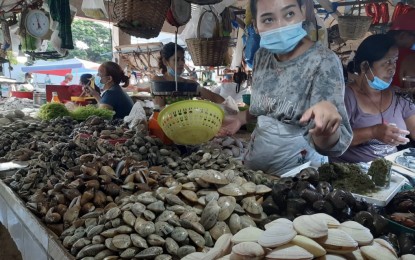
RED TIDE. The Bureau of Fisheries and Aquatic Resources (BFAR) in Central Visayas on Friday (Sept. 4, 2020) warned the public that red tide toxins remain present in the coastal waters of Dauis town and Tagbilaran City in Bohol and in Tambobo and Siit bays in Siaton town, and in Bais Bay in Bais City, Negros Oriental. Residents in these communities are advised to refrain from harvesting, buying, selling, or eating any type of shellfish. (PNA file photo)
CEBU CITY – The Bureau of Fisheries and Aquatic Resources (BFAR) in Central Visayas on Friday warned the public that red tide toxins remain present in the coastal waters of Dauis town and Tagbilaran City in Bohol; and in Tambobo and Siit bays in Siaton town, and in Bais Bay in Bais City, Negros Oriental.
This is based on the latest bulletin issued by the agency on Friday.
The BFAR asked residents in these communities to refrain from harvesting, buying, selling, or eating any type of shellfish.
“All types of shellfish gathered from the areas are not safe from human consumption,” the BFAR said in its advisory.
The agency however said that fresh fish, shrimps, squid and crabs remain safe for consumption if washed thoroughly provided that the gills and intestines are removed before cooking.
BFAR's recent laboratory results from Manila confirmed that the samples taken from the said areas in Bohol and Negros Oriental are found with “paralytic shellfish poison (PSP) that is beyond the regulatory limit."
Red tide is the common term used to describe a coastal phenomenon wherein water is discolored by high algal biomass or concentration of algae.
Red tide blooms are commonly caused by environmental conditions such as the intensity of sunlight; and the change in water temperature, salinity, and nutrient levels.
Shellfishes are actually unaffected by red tide but they accumulate the toxin in their bodies. A person who eats contaminated shellfish could be poisoned.
If so, vomiting should be induced and the person must be brought to the hospital for immediate treatment, according to BFAR. (PNA)
